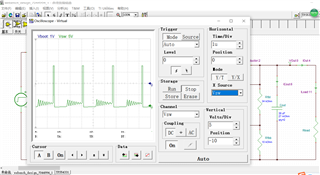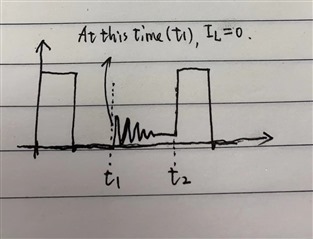In the answer to this question(Link as follows), mention that"there's still a little bit of current in L".But at this point the current in L has dropped to zero, where does the current come from?
I asked the other engineers, and there were two possible explanations:
① maybe the residual AC current in the inductor;(But I don't understand the AC current)
② maybe that the Output Cout reverse discharge。 Vout(Cout),L,Coss(MOS LS) constitutes LC resonant circuit。Vout(Cout) is equivalent to a constant Voltage source.
So, which of these two statements is reasonable?





